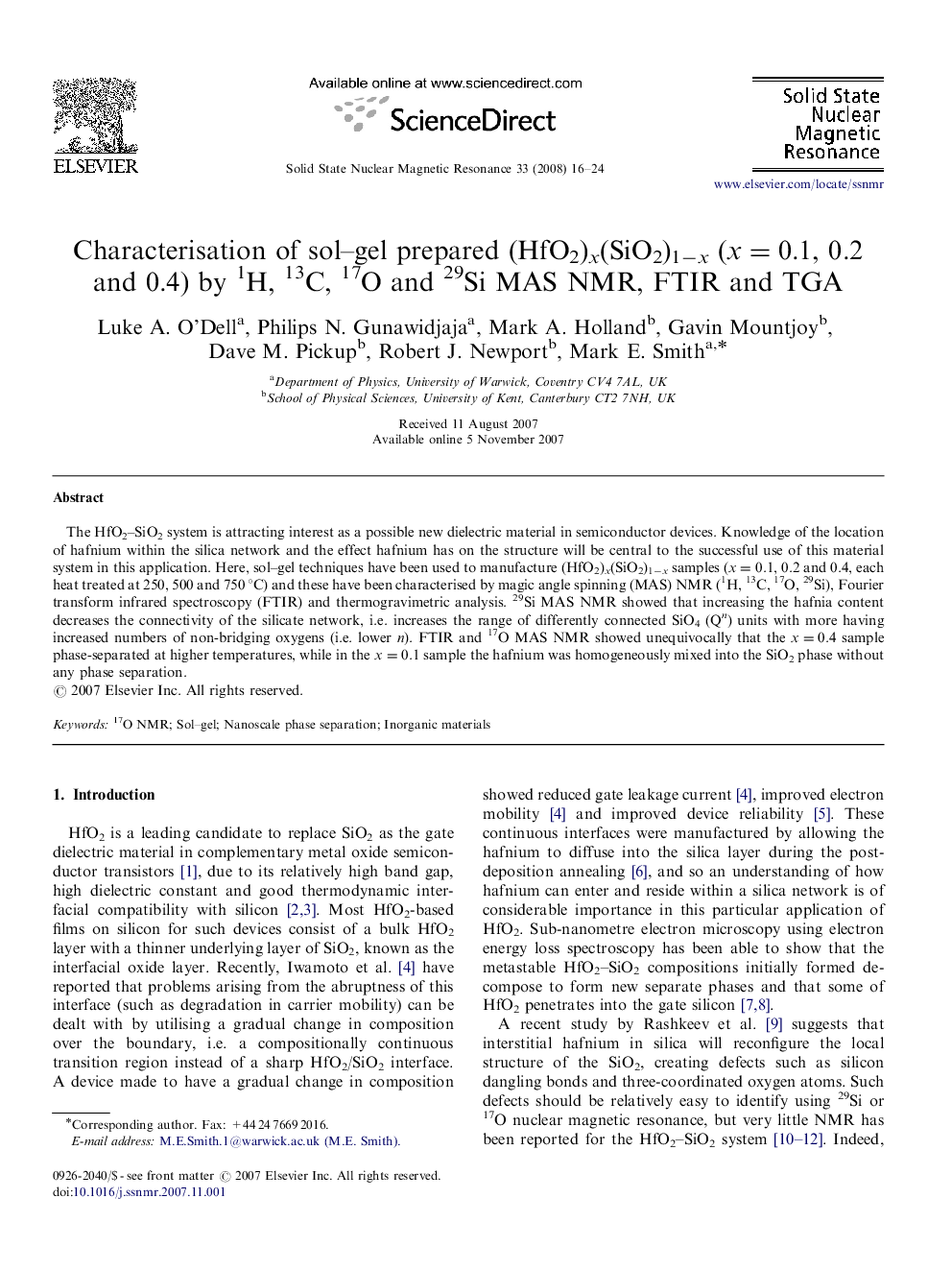| Article ID | Journal | Published Year | Pages | File Type |
|---|---|---|---|---|
| 5420778 | Solid State Nuclear Magnetic Resonance | 2008 | 9 Pages |
Abstract
The HfO2-SiO2 system is attracting interest as a possible new dielectric material in semiconductor devices. Knowledge of the location of hafnium within the silica network and the effect hafnium has on the structure will be central to the successful use of this material system in this application. Here, sol-gel techniques have been used to manufacture (HfO2)x(SiO2)1âx samples (x=0.1, 0.2 and 0.4, each heat treated at 250, 500 and 750 °C) and these have been characterised by magic angle spinning (MAS) NMR (1H, 13C, 17O, 29Si), Fourier transform infrared spectroscopy (FTIR) and thermogravimetric analysis. 29Si MAS NMR showed that increasing the hafnia content decreases the connectivity of the silicate network, i.e. increases the range of differently connected SiO4 (Qn) units with more having increased numbers of non-bridging oxygens (i.e. lower n). FTIR and 17O MAS NMR showed unequivocally that the x=0.4 sample phase-separated at higher temperatures, while in the x=0.1 sample the hafnium was homogeneously mixed into the SiO2 phase without any phase separation.
Related Topics
Physical Sciences and Engineering
Chemistry
Physical and Theoretical Chemistry
Authors
Luke A. O'Dell, Philips N. Gunawidjaja, Mark A. Holland, Gavin Mountjoy, Dave M. Pickup, Robert J. Newport, Mark E. Smith,
